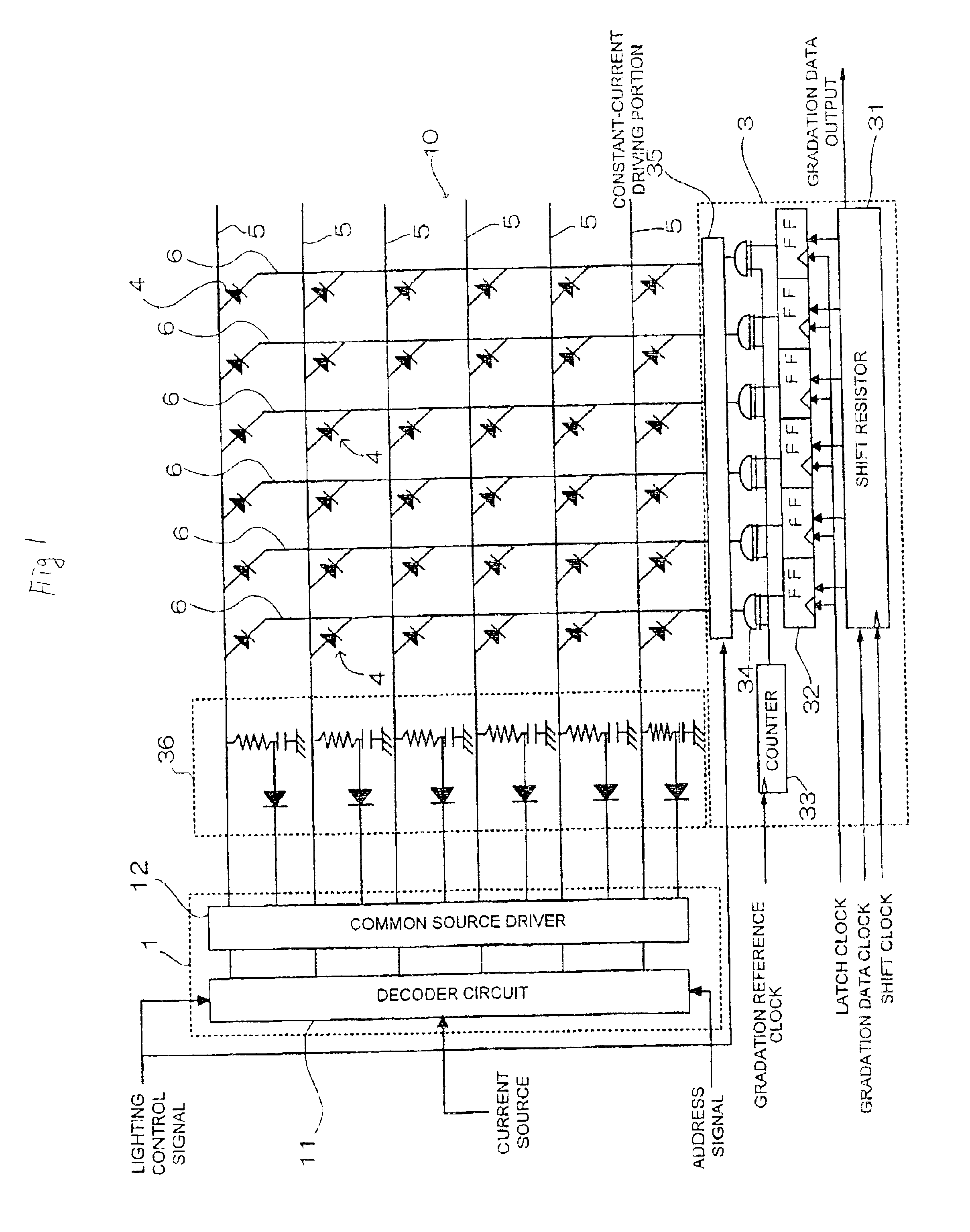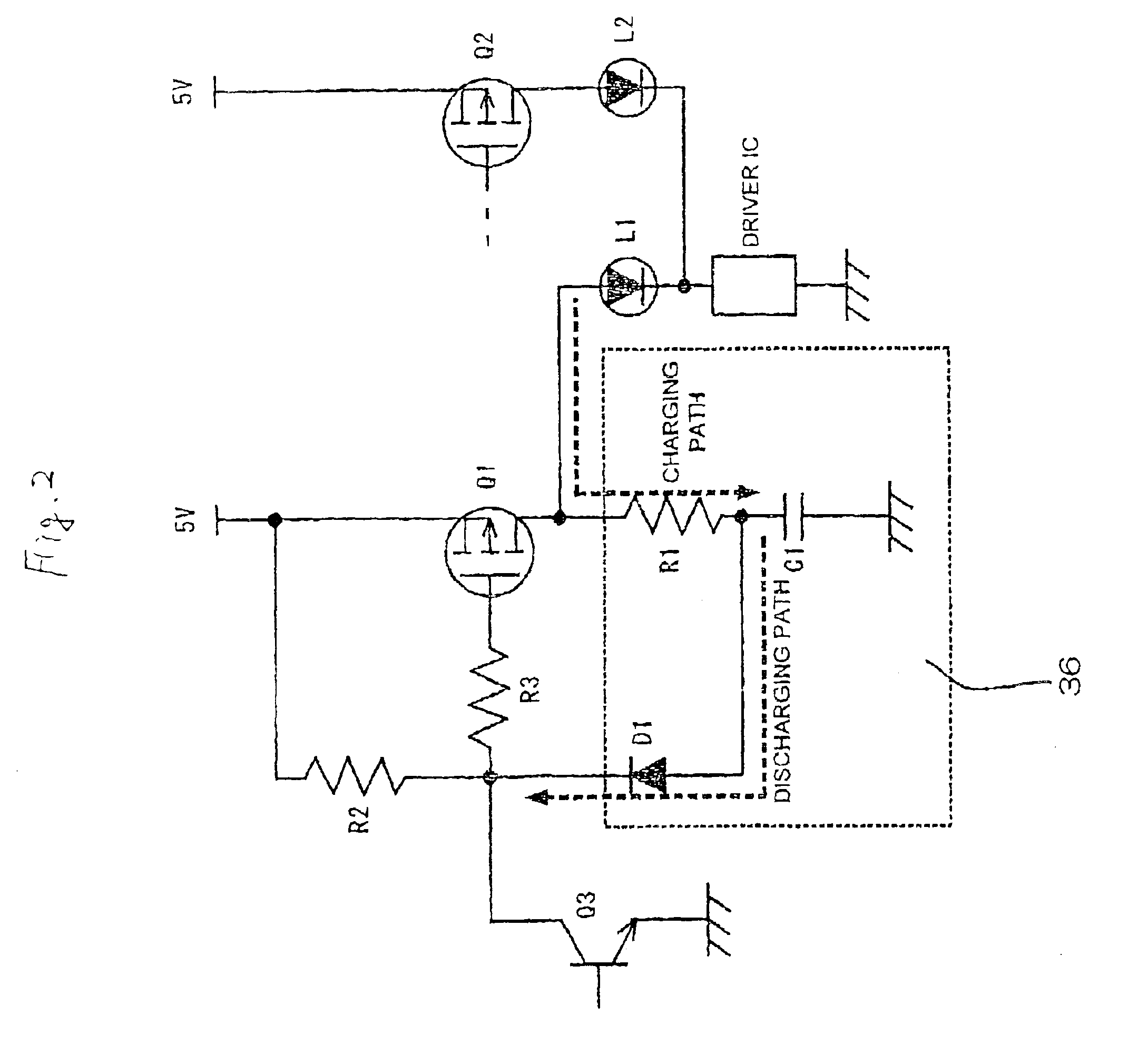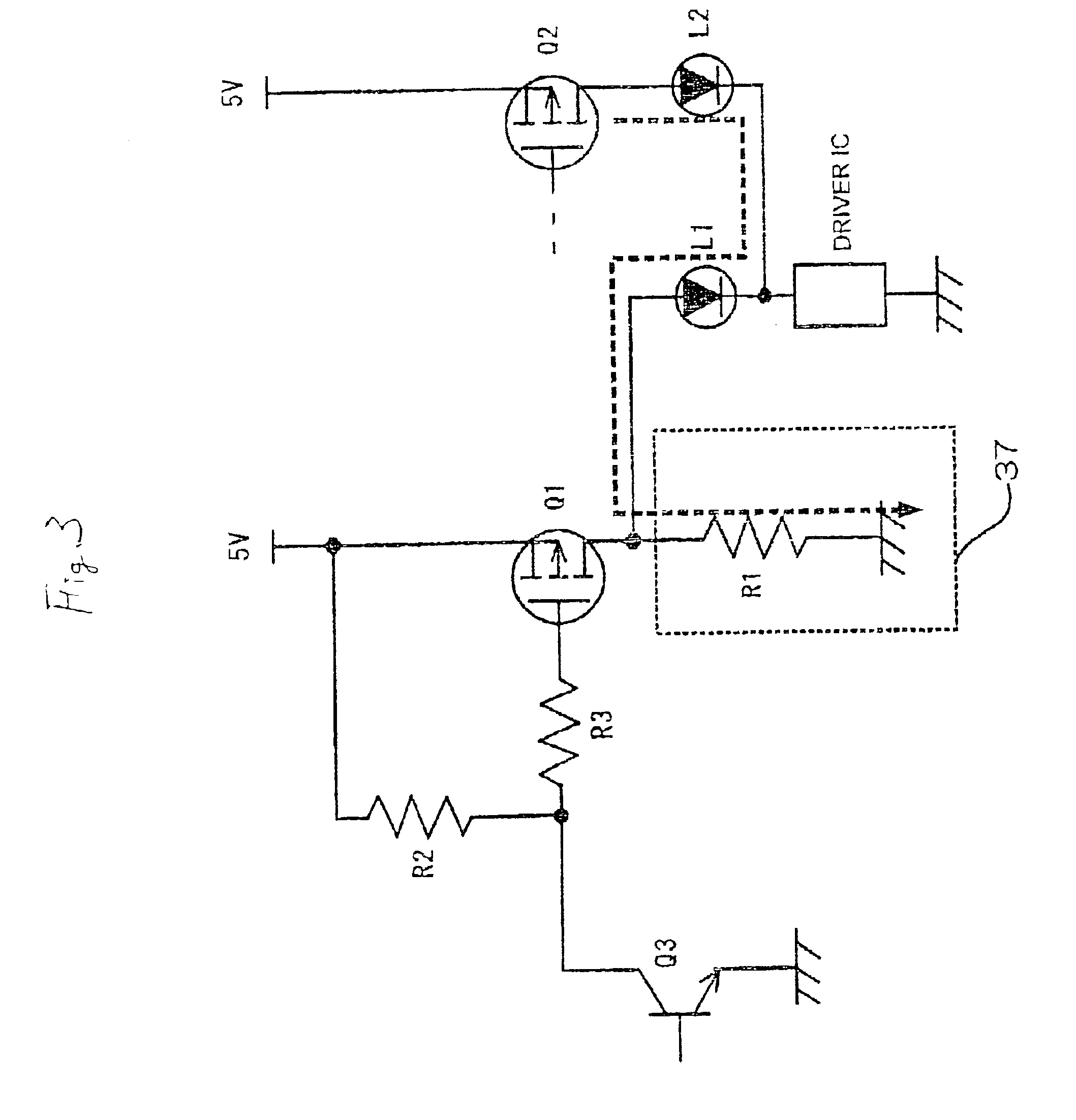Control circuit for charging and discharging, illuminating apparatus and driving method thereof
a control circuit and illuminating technology, applied in static indicating devices, instruments, electrochemical generators, etc., can solve the problems of residual charge, undesirable current, residual charge, etc., and achieve high display quality, high-quality display, and substantial elimination of the influence of residual charg
- Summary
- Abstract
- Description
- Claims
- Application Information
AI Technical Summary
Benefits of technology
Problems solved by technology
Method used
Image
Examples
embodiment 1
FIG. 1 is a block diagram schematically showing a construction of an LED display apparatus according to an embodiment of the present invention. The undesirable-emission-preventing circuit 36 in the invention is provided for each common source line. The LED display apparatus of this embodiment comprises an LED display portion including a plurality of light-emitting diodes 4 arranged in a matrix with m rows and n columns, a current line provided for each column and connected to a cathode terminal of each of the light-emitting diodes 4 arranged in each column, and a common source line provided for each row and connected to an anode terminal of each of the light-emitting diodes 4 arranged in each row; a current-source switching circuit 1, which has m of switching circuits connected to the corresponding common source lines 5, capable of connecting the common source line addressed by an address signal input to a current source in the light-on period determined by the lighting control sign...
embodiment 2
The following description will describe the second embodiment according to the present invention with reference to the drawings. FIG. 7 to FIG. 10 show a second driving method according to the present invention. The second driving method is an embodiment, in which a residual charge in a current line is eliminated when scanning changes into the next common switch line.
In FIG. 7 to FIG. 10, current lines (driving lines), common switch lines (scanning lines), charge elements connected at locations corresponding to intersections of them, a common switch line scanning circuit, a current line driving circuit, an anode control circuit for charging and discharging, and a driving control circuit are shown as A1-A256, B1-B64, E1,1-E256,64, 41, 42, 43, and 44 respectively.
The common switch line scanning circuit 41 has scanning switches 451-4564 for sequentially scanning common switch lines B1-B64. One terminal of each of the scanning switches 451-4564 is connected to a reverse bias Vcc (10 V, ...
embodiment 3
The following description will describe an undesirable-emission-preventing circuit of a control circuit for charging and discharging of the embodiment 3 according to the present invention with reference to FIG. 12.
In FIG. 12, a switch (SW2) operates in synchronization with a switch (SW1). When the switch (SW1) is connected to a power supply (5V), the switch (SW2) is opened, and when the switch (SW1) is grounded, the switch (SW2) is grounded. In addition, when the switch (SW1) is grounded, a transistor (Q1) is turned on, and a light-emitting diode (L1) emits corresponding to a driving status of a driver IC. At this time, the switch (SW2) is grounded, and a residual charge accumulated in a capacitor (C1) is discharged through the switch (SW2).
When the switch (SW1) is connected to the power supply (5V), the transistor (Q1) is turned off, and the light emitting diode (L1) is in a driven-off status irrespective of a driving status of the driver IC. While a transistor (Q1) turns off, the ...
PUM
| Property | Measurement | Unit |
|---|---|---|
| resistance | aaaaa | aaaaa |
| resistance | aaaaa | aaaaa |
| resistance | aaaaa | aaaaa |
Abstract
Description
Claims
Application Information
 Login to View More
Login to View More - R&D
- Intellectual Property
- Life Sciences
- Materials
- Tech Scout
- Unparalleled Data Quality
- Higher Quality Content
- 60% Fewer Hallucinations
Browse by: Latest US Patents, China's latest patents, Technical Efficacy Thesaurus, Application Domain, Technology Topic, Popular Technical Reports.
© 2025 PatSnap. All rights reserved.Legal|Privacy policy|Modern Slavery Act Transparency Statement|Sitemap|About US| Contact US: help@patsnap.com



